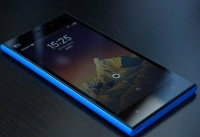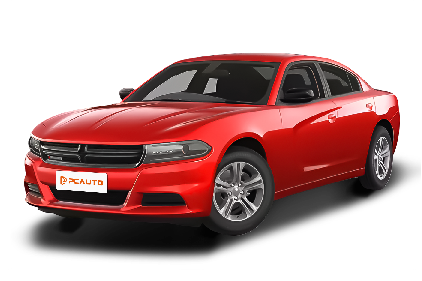Q
What does the R/T mean on a Dodge Charger?
On the Dodge Charger, R/T is an abbreviation for “Road/Track”, representing this model's balanced positioning that combines daily road driving and track performance. It is usually equipped with a more powerful powertrain than the base version, such as the classic 5.7-liter HEMI V8 engine, which outputs about 370 horsepower. At the same time, performance configurations like suspension and brakes will be upgraded. For Malaysian car enthusiasts, although the R/T version is not as radical as the higher-level SRT or Hellcat, it is more suitable for local road conditions and fuel conditions. It allows drivers to experience the powerful roar of American muscle cars while maintaining practicality and relative fuel economy. In Dodge's vehicle naming system, R/T has a long history, dating back to the 1960s, symbolizing the brand's commitment to driving pleasure. American cars imported into Malaysia are known for their high cost - effectiveness, and the R/T version is a popular choice that combines individuality and performance. When considering the used - car market, one needs to pay attention to maintenance costs and the compliance of right - hand drive conversions. Overall, the R/T logo has always been a synonym for performance and classic in American car culture.
Special Disclaimer: This content is published by users and does not represent the views or position of PCauto.
Related Q&A
Q
Is the 2023 Dodge Charger GT fast?
The 2023 Dodge Charger GT performs well in terms of performance. It is equipped with a 3.6-liter V6 naturally aspirated engine, with a maximum output power of 300 horsepower and a peak torque of 264 lb-ft. Paired with an 8-speed automatic transmission, it can accelerate from 0 to 100 km/h in about 6 seconds. This is quite fast for a mid - to large - sized sedan, especially suitable for the urban roads and highway driving needs in Malaysia. Although it's not the fastest model in the Charger series (for example, the Hellcat version has stronger performance), the GT version strikes a good balance between power and fuel economy. Meanwhile, it also offers rear - wheel drive or all - wheel drive options to meet different driving preferences. If you're after stronger performance, you can consider the Charger R/T or Scat Pack versions. They are equipped with V8 engines, providing more power but also consuming more fuel. Given the hot climate in Malaysia, it is recommended to regularly maintain the engine and cooling system to ensure the vehicle stays in good condition in the long run.
Q
Are Dodge Chargers 4-door?
Yes, the Dodge Charger is a classic four - door muscle car. Since its launch in 1966, most models have adopted a four - door design. In particular, all current models (as of 2023) feature a four - door layout, which combines the performance of American muscle cars with family practicality.
For car enthusiasts in Malaysia, although the Dodge brand is relatively niche there, the Charger can still be seen through parallel imports. Its iconic HEMI V8 engine and four - door design not only provide furious acceleration but also make it suitable for family use.
It's worth noting that four - door muscle cars are relatively rare in the Southeast Asian market. These types of vehicles usually focus more on straight - line acceleration performance. Compared with the common Japanese or European four - door sedans in Malaysia, the Charger's wide - body design and rear - wheel drive layout require drivers to adapt to the local rainy - climate driving habits.
In addition, Dodge announced in 2023 that the Charger will be transformed into a pure - electric vehicle. Future versions may continue with the four - door design, but the power system will be completely overhauled. This might be an interesting option for Malaysian consumers who are concerned about environmental trends.
Q
Are Dodge Chargers RWD or FWD?
The Dodge Charger is a classic American muscle car, primarily featuring rear-wheel drive (RWD). This design offers more powerful power output and a more engaging driving experience, making it a great fit for owners who pursue performance. In Malaysia, despite the variable road conditions and climate, rear-wheel-drive cars perform exceptionally well on dry roads. Some high-performance versions are even equipped with an all-wheel-drive (AWD) system to enhance stability on slippery surfaces. The Dodge Charger has never had a front-wheel-drive (FWD) version, which aligns with its muscle car positioning.
For Malaysian consumers considering a rear-wheel-drive model, it's important to pay attention to driving skills on rainy or slippery roads. You should control the throttle properly to avoid skidding. Meanwhile, rear-wheel-drive cars usually have a better front - rear weight distribution, offering more flexibility when cornering. However, their daily maintenance and tire wear might be slightly higher than those of front-wheel-drive cars. It's recommended to choose based on your personal driving habits and needs.
Q
Does the Dodge Charger have a 360 camera?
Yes, some high - end models of the Dodge Charger are indeed equipped with a 360 - degree panoramic camera system. This function provides a panoramic view around the vehicle through a combination of multiple cameras, which is especially useful for users in Malaysia. It allows for easier judgment of surrounding obstacles in narrow streets or crowded parking lots. Currently, the 360 - degree camera is mainly found in the Scat Pack or higher - spec versions of the Charger, but the specific configuration should be based on the configuration list provided by local dealers in Malaysia.
It's worth mentioning that the 360 - degree camera technology was initially used mainly in luxury models and has now gradually become popular in performance cars and family cars. It not only assists in parking but also provides a more comprehensive view at low speeds, reducing the risk of blind spots. Malaysian consumers should also note that these high - tech configurations may need to be optionally installed or bundled with specific packages. It is recommended to visit authorized dealers to personally experience the smoothness of the operation interface and the clarity of the images. At the same time, judge the practicality based on your own driving habits, because American muscle cars like the Charger, which are relatively wide in Malaysia, are in greater need of such auxiliary systems.
Q
Does the Dodge Charger have AWD?
The Dodge Charger does offer an all-wheel drive (AWD) version, but not all models come standard with this feature. It depends on the year and configuration. For example, the Charger GT and Charger R/T models from 2014 to 2021 could be optionally equipped with an AWD system, while high-performance versions like the Charger SRT Hellcat only offer rear-wheel drive (RWD) to maintain light weight and sporty performance. For Malaysian consumers, the AWD system can provide better traction and stability when driving on slippery roads or during the rainy season. However, it should be noted that AWD models may result in higher fuel consumption and maintenance costs.
In addition, as a representative of American muscle cars, the Dodge Charger's large-displacement V6 or V8 engines and classic design are quite niche in the local market. If you're considering a parallel import, you need to confirm whether it meets Malaysia's emission and certification standards. It is also recommended to learn about after-sales support and parts supply through official channels or authorized dealers.
Q
Does a Dodge Charger have horsepower?
Yes, the Dodge Charger does have powerful horsepower. The specific figures depend on the models of different years and configurations. For example, the latest Dodge Charger SRT Hellcat is equipped with a 6.2 - liter supercharged V8 engine, which can output up to 717 horsepower. The higher - performance Charger SRT Hellcat Redeye can even reach 797 horsepower, making it one of the rare high - performance four - door sedans in the Malaysian market. For Malaysian car enthusiasts, the Dodge Charger is not only famous for its classic American muscle car styling but also highly regarded for its powerful performance and unique rear - wheel or four - wheel drive configurations. In Malaysia, although such large - displacement models may face high import taxes and fuel costs, their excellent acceleration performance and unique driving experience still attract many performance - seeking car owners.
In addition, understanding horsepower data is important when choosing a car, but factors such as torque, gearbox tuning, and chassis settings should also be comprehensively considered, as these will all affect the actual driving experience. If you're interested in American muscle cars, you can also pay attention to other similar models like the Ford Mustang or Chevrolet Camaro. They also offer different levels of horsepower configurations to meet various driving needs.
Q
Does the Dodge Charger have traction control?
Yes, the Dodge Charger is indeed equipped with a Traction Control System (TCS). This feature is particularly useful in the driving environment of Malaysia. Especially on wet roads during rainy days or when making an emergency acceleration, the system will automatically monitor wheel slippage and adjust the engine output or apply braking force to ensure the vehicle remains stable. Traction control is an important part of modern automotive safety technology. Many Malaysian consumers will pay special attention to such configurations when purchasing high - performance cars like the Charger, as it can enhance driving safety.
In addition to traction control, the Charger may also be equipped with an Electronic Stability Program (ESC) and multiple driving modes to further meet the needs of different road conditions. In Malaysia's rainy climate and mixed urban road conditions, these systems can effectively reduce the risk of slippage and loss of control. It is recommended that car owners regularly check the system status to ensure normal functionality.
If you have any questions about the specific configuration of the model, you can inquire with the local authorized dealer for the latest specifications, as there may be slight differences in technical details among Chargers of different years or versions.
Q
Do Dodge Chargers have lane assist?
Some models of the Dodge Charger are indeed equipped with the Lane Assist system. For example, in high - end versions like the Charger GT or R/T Scat Pack, an advanced driver assistance package is usually installed, which includes Lane Keep Assist and Lane Departure Warning functions. These systems use cameras to monitor lane markings. When the vehicle unintentionally drifts out of the lane, they provide steering wheel correction or vibration alerts. They are especially suitable for long - distance driving or on highways in Malaysia.
It should be noted that the lane assistance functions may vary among models of different years and configurations. It is recommended to carefully check the configuration list of the specific model or consult the local dealer before purchasing a car. For Malaysian consumers, this kind of driver assistance technology can effectively improve driving safety, especially in areas with frequent rain and fog. However, drivers still need to stay focused because the system is only an auxiliary tool and cannot completely replace manual operation.
If you're interested in this kind of technology, you can also learn about similar functions in models of other brands such as Toyota and Honda. They are usually named "Toyota Safety Sense" or "Honda Sensing". The principles are similar, but the operation details are slightly different.
Q
What is the safety rating of the Dodge Charger?
The safety ratings of the Dodge Charger vary depending on the specific year and configuration. The latest models have performed well in the tests conducted by the National Highway Traffic Safety Administration (NHTSA) and the Insurance Institute for Highway Safety (IIHS) in the United States. For example, the 2023 Charger received a five - star overall rating from the NHTSA, and the IIHS gave it a "Good" rating in many of its crash tests, especially excelling in the frontal offset crash and side - impact tests.
For Malaysian consumers, although there is no local official agency conducting similar tests, the Charger's US - spec safety features such as the multi - airbag system, electronic stability control, blind - spot monitoring, and automatic emergency braking can still provide a high level of safety for drivers.
It's worth noting that safety ratings are not the only thing to consider. The road conditions during actual driving, the vehicle's maintenance status, and driving habits are also equally important. It is recommended that Malaysian car owners consider their own needs when purchasing a car and also pay attention to the vehicle's active safety features, such as adaptive cruise control and lane - keeping assist. These technologies can further enhance driving safety, which is especially useful on Malaysia's complex urban and highway roads.
Q
Is a Dodge Charger a drag car?
The Dodge Charger is indeed a model often used in drag racing. Especially its high - performance versions like the Charger SRT Hellcat, with its powerful HEMI V8 supercharged engine (capable of outputting over 700 horsepower) and an optimized rear - wheel drive system, have become a popular choice for drag racing. However, in essence, it's a high - performance muscle car that balances daily driving and track performance. It's not a pure competition vehicle specifically designed for drag racing (such as a dragster).
In Malaysia, due to the right - hand drive market restrictions, the Charger hasn't been officially introduced. But a small number of left - hand drive vehicles imported through parallel channels may appear on private tracks or in the modification circle. Local enthusiasts need to pay attention to the legal issues. If you're interested in drag racing, locally modified Japanese cars (such as the Mitsubishi Evolution or Nissan GT - R) are more common in Malaysia because there's better support for parts and tuning.
Although the Dodge Charger has high modification potential, one needs to consider the local maintenance network and fuel compatibility. It's recommended to conduct in - depth research before investing in modifications.
Latest Q&A
Q
How many miles per gallon does the Dodge Charger achieve?
The Dodge Charger's fuel economy varies depending on the specific trim and engine setup. Take the rear-wheel-drive model with the 3.6L V6, for example—it'll sip around 19-23 MPG in the city and stretch to 30-31 MPG on the highway. Step up to the high-performance 6.4L V8 HEMI, and you're looking at roughly 15-17 MPG in urban driving and 24-25 MPG out on the open road. If you opt for the even more beastly 6.2L supercharged V8 in the Charger SRT Hellcat, city fuel economy drops to about 12-13 MPG, with highway figures coming in at 21-22 MPG.
For our readers in Malaysia, keep in mind these numbers are based on U.S. EPA testing standards. Real-world fuel efficiency can vary depending on your driving style, road conditions, and fuel quality. Since Malaysia uses the metric system, you can convert these MPG figures to liters per 100 kilometers for easier reference (1 MPG ≈ 0.425 km/L).
Also, hybrid or future electric versions could offer better efficiency down the line. Before making a purchase, it's smart to check local specifications and tax policies—big-displacement engines might mean higher road taxes in Malaysia. And don't forget, regular maintenance and keeping your tires properly inflated can also help optimize fuel economy.
Q
When was Dodge Charger released?
The Dodge Charger first hit the scene back in 1966, and man, did it make a statement. As a classic American muscle car, it quickly became the poster child for power and style. That first-gen model packed some serious V8 heat, like the legendary 7.0-liter Hemi, setting the bar high for what a high-performance ride should be.
Over in Malaysia, you don't see Chargers cruising around every day—they're pretty rare birds. But when you do spot one, heads turn. Its bold, in-your-face design and brute force under the hood still hook a solid group of local gearheads.
Through the years, the Charger's gone through some major evolutions. The latest model? It's like they took that classic muscle soul and injected it with 21st-century tech. We're talking advanced driver-assistance systems, more efficient powertrains—think 3.6L V6 and 5.7L V8 options—and then there's the beastly Hellcat trim, rocking a 6.2L supercharged V8 that cranks out over 700 horsepower. Insane, right?
For Malaysian car fans, the Charger isn't just a car—it's a symbol of that wild, unapologetic American muscle spirit. Yeah, the local market's mostly dominated by Japanese and European rides, but you'll catch the occasional imported Charger rolling around, especially in enthusiast circles. Whether it's a vintage classic or a modern rocket ship, the Charger's history and raw performance have cemented its spot as an icon in car culture. And let's be real—either way, it's all about that pure, unfiltered American driving thrill.
Q
What is the sport traction control of the Dodge Charger?
In the Dodge Charger, Traction Control Sport is an electronic stability feature engineered specifically to amp up the driving fun. It dials back the traction control intervention when you're pushing the car hard, letting the rear wheels break loose a little in a controlled way. This helps you get more agile turn-in or even a little power slide, all while still keeping that baseline safety net in place.
You’ll usually find a button on the center console to kick it on. It’s right at home on a track or closed course, but for your daily grind on the streets, sticking with the default mode is the smart call for safety. Now, for our friends in Malaysia, those wet, rainy roads can up the ante on wheel spin, so definitely use this feature with a bit of extra caution.
Here’s the lowdown on how it works: sensors keep an eye on wheel speed differences, and if things start to get sketchy, the system automatically tweaks engine power or hits the brakes to keep you from losing control. Different brands slap different names on similar setups—like ESC Sport or VDC Off—but they’re all chasing that same sweet spot between safety and raw handling.
If you’re hungry to dive deeper into car electronics, check out stuff like electronic limited-slip differentials or torque vectoring. They’re all part of the tech package that makes modern performance cars handle as good as they do.
Q
How many miles can Dodge Charger travel?
For Malaysian consumers wondering about the Dodge Charger's durability, this American muscle car typically clocks in 320,000 to 480,000 kilometers over its lifespan—mileage that really hinges on how well you maintain it and your driving habits. With Malaysia's hot and rainy climate, make sure to pay extra attention to regular checks on the cooling system and rubber components. Stick to the manufacturer's recommended service interval of 5,000 to 7,500 miles (around 8,000 to 12,000 km), and using full synthetic oil will definitely help extend the engine's life. The Charger's Hemi V8 is known for being tough as nails, but stop-and-go city traffic can wear out the clutch faster. So, if you're regularly driving in congested areas like KL, consider shortening the gearbox oil change interval a bit. It's worth noting that the right-hand-drive version in Malaysia shares basically the same mechanicals as left-hand-drive models, and parts supply is solid through authorized dealers, keeping long-term ownership costs manageable. If you're eyeing a used model, focus on checking the electronics in post-2015 cars—their Uconnect infotainment systems can get laggy if not maintained, but that doesn't hurt the overall mechanical reliability of the car.
Q
How to install the cold air intake on Dodge Charger?
Installing a cold air intake system on your Dodge Charger is a solid mod that can boost both engine performance and fuel efficiency. First off, you’ll need to grab the right cold air intake kit—make sure it’s compatible with your Charger’s engine model. Here in Malaysia’s hot climate, go for intake tubes made from heat-resistant materials like aluminum alloy or high-density plastic; they’ll hold up better over time. The installation steps involve yanking out the stock air filter box, disconnecting the sensor plugs, fitting the new intake piping and high-flow air filter, and making sure all connections are sealed tight to keep unfiltered air out of the engine. Once it’s all set up, check if the check engine light comes on—if it does, you might need an OBD2 scanner to reset the ECU so it adjusts to the new air intake volume.
Basically, a cold air intake works by lowering the temperature of the incoming air, which increases oxygen density and improves combustion efficiency. But heads up: during Malaysia’s rainy season, you’ll want to add a waterproof shield to prevent the engine from sucking in water. Also, keep in mind that mods like this could affect your factory warranty, so it’s smart to check with an authorized service center before diving in. If you’re chasing even better results, pairing it with an exhaust system upgrade can help, but make sure everything stays within JPJ’s noise and emissions regulations.
View More


















Pros
Cons